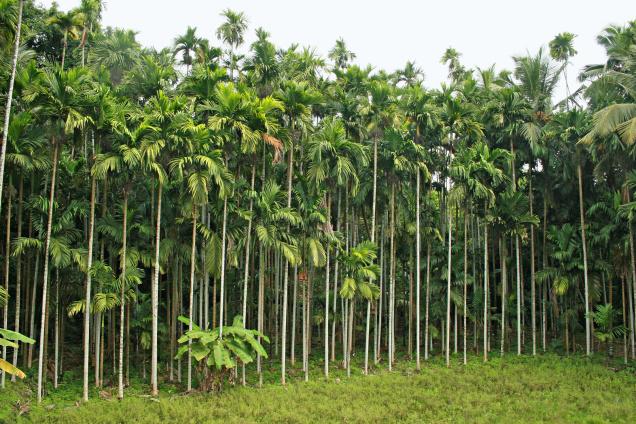 Shimoga, June 22;The ban on gutka and the fears that it would eventually lead to fall in areca prices have clearly not stopped farmers in Shimoga district from planting areca saplings. This is because they believe that the returns would still be more attractive compared to paddy, sugarcane and maize, the other important crops in the region.
Shimoga, June 22;The ban on gutka and the fears that it would eventually lead to fall in areca prices have clearly not stopped farmers in Shimoga district from planting areca saplings. This is because they believe that the returns would still be more attractive compared to paddy, sugarcane and maize, the other important crops in the region.
After gutka was banned, Yogeshwarappa K.S. from Kommanal village has planted arecanut saplings in his 1.5 acres of land. He does not think that the ban on gutka will immediately hit the price of arecanut.
Mr. Yogeshwarappa’s family owns six acres of arecanut plantation. They used to grow food crops in the 1.5 acres of land. “As profit from cultivation of arecanut was much more compared to maize and paddy, we decided to plant it in the remaining 1.5 acres of land,” he said.
Says Rohith Kumar A.O., a farmer from Antaragange village near Bhadravathi, “After deducting the expense towards inputs and labour, the arecanut grower will profit Rs. 70,000 to Rs. 80,000 per acre. The profit from cultivating paddy in an acre of land will not be more than Rs. 20,000,” he said.
The problem of shortage of labour was another reason farmers in Malnad have opted for arecanut. Mr. Rohith says that the work of providing fertilizer, de-weeding and harvesting that require labour should be undertaken at a proper time for paddy, maize and sugarcane. Those who cultivate arecanut can postpone this work for at least 15 days if workers are not available, he said.
The last decade saw a sudden surge in the prices of areca owing largely to the impact of gutka. The price per acre of arecanut that was around Rs. 1,800 per quintal in 1988 surged to Rs. 20,000 a quintal in 1996. Though there was a small decline in the price for the next few years, it again crossed the Rs. 20,000 mark in the year 2000.
According to the information provided by the Department of Horticulture, the area under cultivation of arecanut was 26,628 hectares of land in 2000 and it went up to 45,171 hectares of land by 2012. Even in the command area of the Bhadra reservoir, farmers switched over from cultivation of paddy and sugarcane to arecanut by violating the cropping pattern designed by the Command Area Development Authority (CADA) given the relative profitability of areca.
